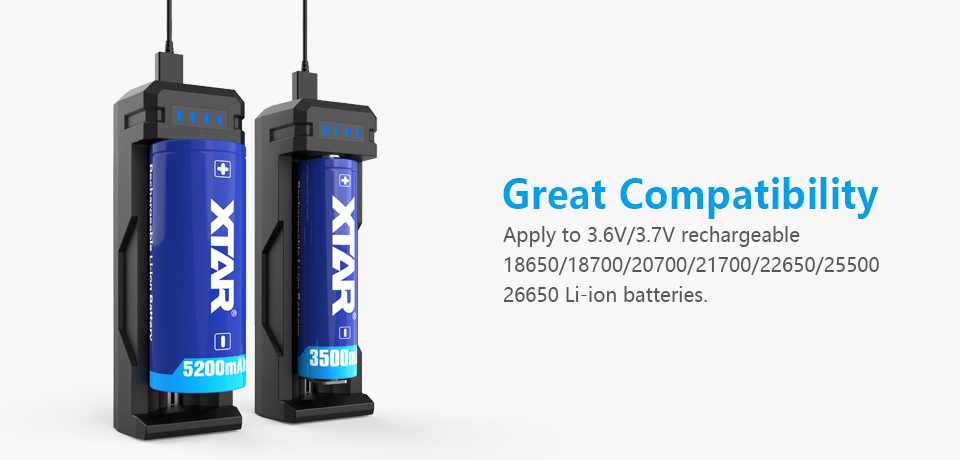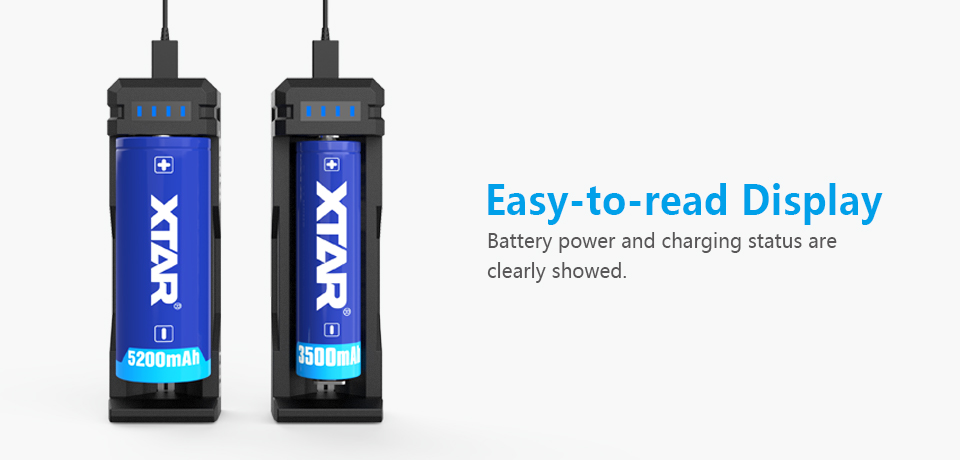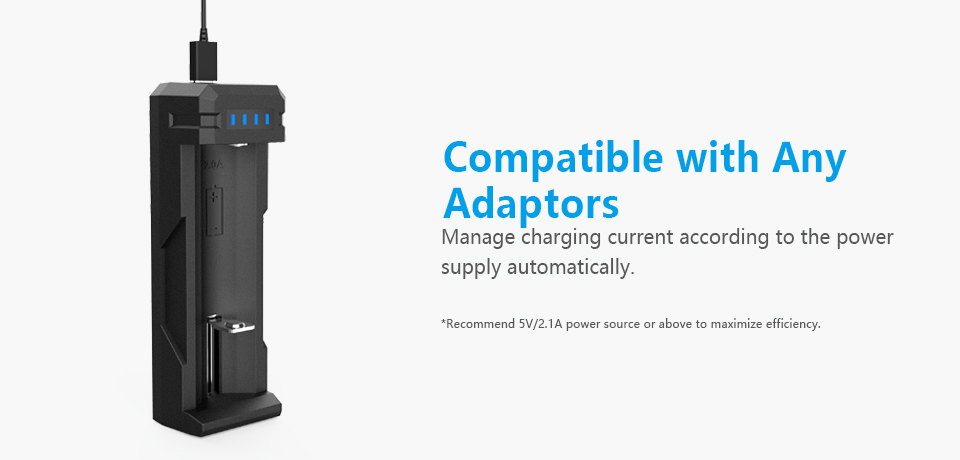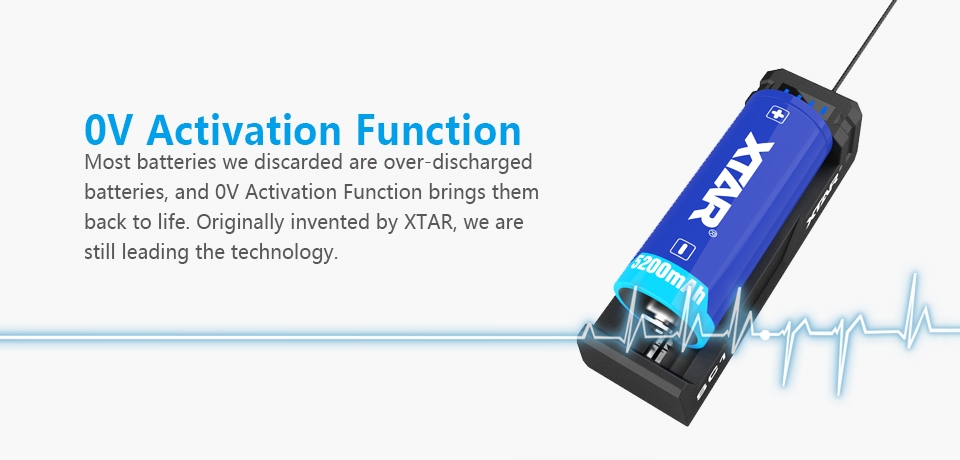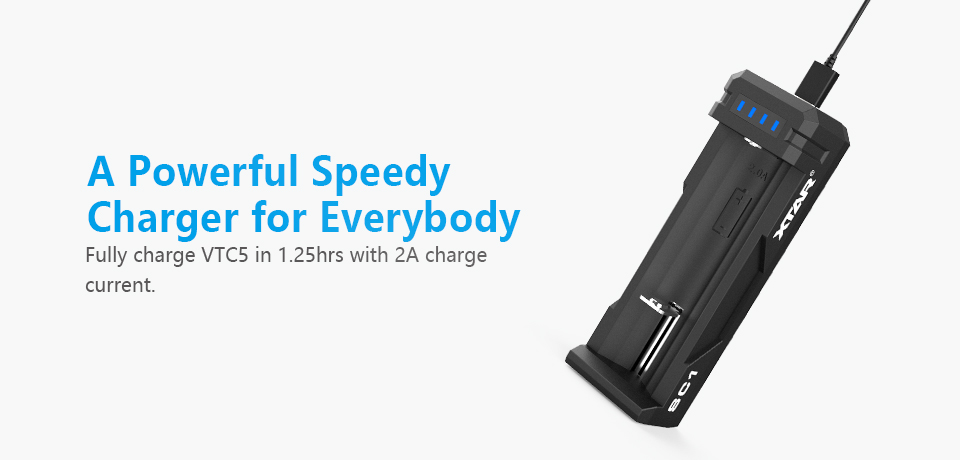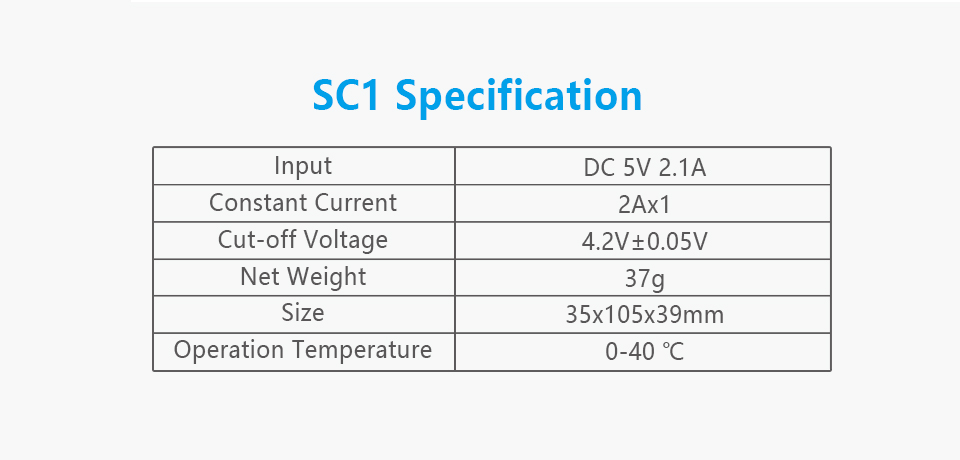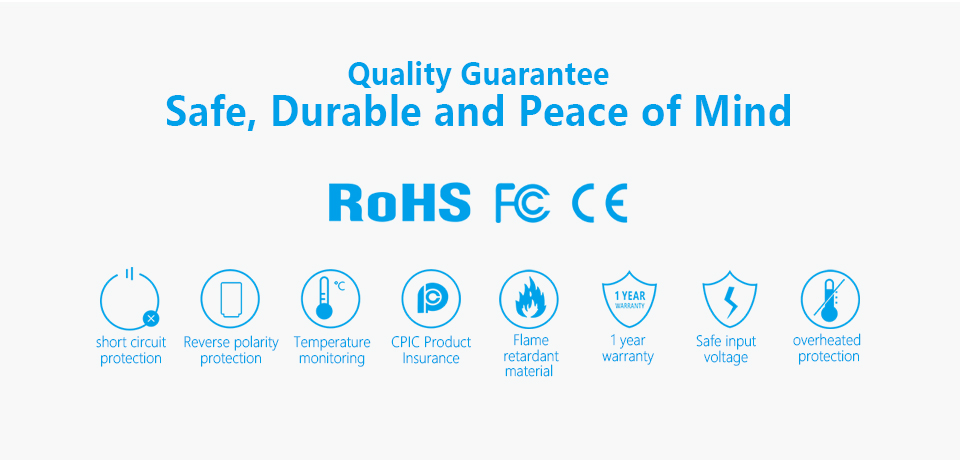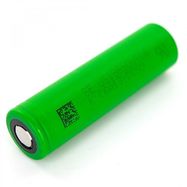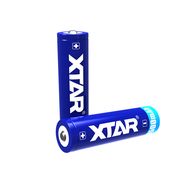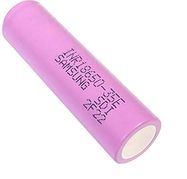Warehouse in Europe
94%+ positive feedback
30 day money back guarantee
Product description

Professional, compact fast processor charger
Xtar SC1 USB-C
for Li-ion batteries in sizes 18650 and others
Key Features
- processor-controlled three-stage TC/CC/CV charging process
- high charging current - 2A
- powered by any USB charger (min. 2.1A) - USB - USB-C cable included
- small size - easy to carry
- function of reactivation of deeply discharged cells
- protections: short-circuit, thermal, reverse polarity protection
A fully professional processor charger with a three-stage TC/CC/CV charging process is hidden in a small housing. It charges 3.6/3.7V Li-ion cells of any capacity in sizes 18650, 18700, 20700, 21700 - also protected, 22650, 25500, 26650.
What is the TC/CC/CV charging method? It is a three-stage charging process for Li-ion cells, ensuring that the cell is kept in good condition by charging with the appropriate current at each stage and completing the charging process at the right time.
The different stages of the TC/CC/CV process are:
- TC phase: cells discharged below 2.9V are 'woken up' by a lower current.
- CC phase: when 2.9V is reached, the cell is charged with a constant current of 2A.
- CV phase: when the cell is almost charged, the charger switches to charging with decreasing current until the voltage of 4.2V across the cell is reached. When 4.2V is reached, the charging process is complete - the battery is fully charged.
Batteries with a voltage of 4.1V or higher are treated as charged by the charger. To fully charge such a battery, it must be inserted into the charger before turning it on to the power supply. Charged batteries left in the charger will undergo a natural self-discharge process. Charging will resume when the battery voltage drops below 4.1V.
The Xtar SC1 charger has the function of reactivating deeply discharged cells and cells with a voltage of 0V. Many chargers on the market are not able to charge such batteries. This is where the Xtar SC1 charger comes in handy, which in many cases allows you to 'rescue' such cells. Simply insert a deeply discharged battery into the SC1 charger as you would with a normal charge - the charger will detect the discharged cell and attempt to reactivate it.
Remark! Cells discharged below a certain level are irreparably damaged and may not be able to be reactivated. Avoid discharging Li-ion batteries too deeply – this can lead to a significant reduction in their durability and capacity, or lead to their complete inefficiency.
Chargers from other manufacturers can significantly increase the temperature of the charged cells during charging. If the cells get too hot, they can wear out faster. With the SC1, Xtar went a step further than the competition by solving this problem in a simple way: it was powered by an external power supply. As a result, the temperature of the battery charged in the SC1 will increase by a maximum of 15 degrees.
The Xtar SC1 charger comes with a USB-C cable. A power adapter is not included. Any charger with a micro USB cable, e.g. from a phone, or a USB socket, or a computer with a free USB port will suffice to power the charger. The recommended minimum charger power is 2.1A (2100mA).
